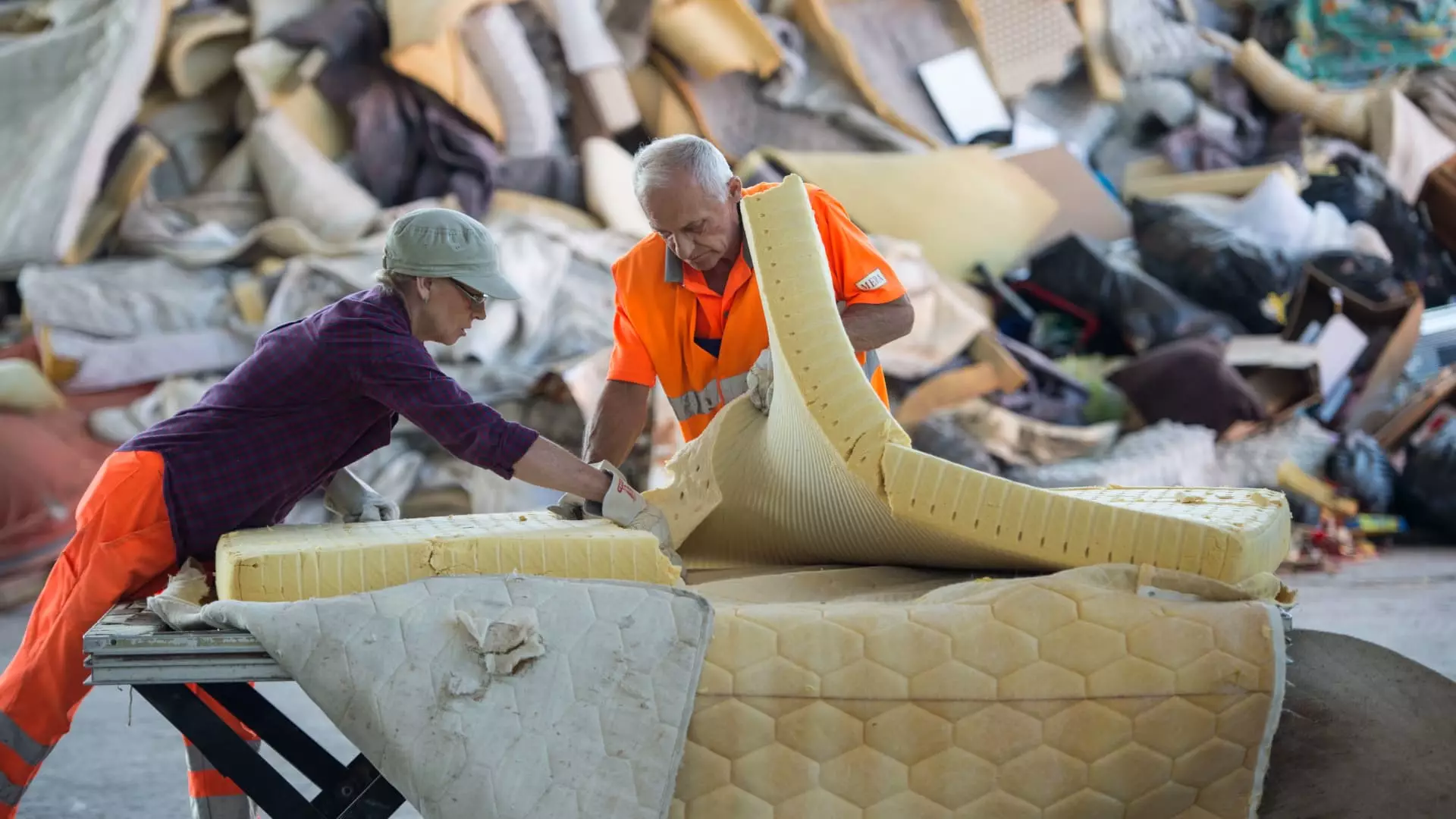As environmental concerns grow, more states in the U.S. are recognizing the need for circular economies in consumer goods. Among the latest endeavors is the mattress recycling initiative, which aims to address the environmental impact of discarded mattresses. Currently, states such as California, Connecticut, Oregon, and Rhode Island have implemented fees that consumers pay with each mattress or box spring purchase. This charge, which varies between $16 and $23, is directed toward state recycling programs that aim to prevent approximately 15 million to 20 million mattresses from ending up in landfills each year.
Discarding mattresses has become a hidden environmental crisis. Americans throw away an astounding number of mattresses daily, averaging about 50,000. According to the Mattress Recycling Council (MRC), a significant portion of these items—over 75%—is recyclable. The materials—ranging from wood and steel to various foams—can be repurposed and reintegrated into new products, reducing the demand for new raw materials. Unfortunately, the mechanisms for mattress recycling have not kept pace with the disposal rates, leading to wasted resources and environmental burden.
Oregon has taken a firm step by implementing a “stewardship assessment” of $22.50 for each mattress sold. This fee is intended to finance a comprehensive recycling program designed to simplify the process for consumers. The hope is that penalizing the primary cause of mattresses ending in dumps will promote recycling, making producers more accountable. California and Connecticut have also raised their fees to $16, which reflects a growing trend to rely on consumer fees to fund these necessary recycling initiatives.
Critics might argue that these fees could deter consumers from making purchases, but they can also serve as an incentive for greater awareness and responsible consumerism. By normalizing the idea that purchasing a mattress contributes to an environmental effort, companies can foster a culture of sustainability within their consumer base.
The mattress recycling initiatives can be seen as part of a broader movement known as Extended Producer Responsibility (EPR). Under EPR legislation, the responsibility for managing waste extends beyond the consumer to include manufacturers and producers. As explained by Reid Lifset from Yale University, this policy shift encourages producers to consider the lifecycle of their products, from manufacturing through to disposal. By incentivizing a take-back system funded through consumer fees, producers are prompted to innovate in ways that prioritize sustainability.
The fees collected from mattress sales are not lost revenue; instead, they are reinvested into operational and educational costs of recycling programs. In Oregon, for example, nearly half of the fees go towards operational expenses, ensuring that the recycling infrastructure continues to strengthen and expand.
Despite these advances, challenges still remain. Only about 58 companies in the U.S. currently specialize in recycling mattresses, often resulting in high fees for consumers seeking drop-off or pick-up services. For instance, residents in non-recycling states may face charges of up to $95 for such services, which can severely limit accessibility to responsible disposal options.
Furthermore, not all regions have collection sites available, making it vital for states with established programs to continue expanding their outreach and make it easier for residents to recycle old bedding. Illegal dumping remains a problem, and establishing user-friendly recycling locations is paramount to combating this issue effectively.
The mattress recycling initiative represents an essential step forward in improving sustainability practices in consumer goods. By taking responsibility through fees that fund recycling programs, states are providing both a solution to an environmental crisis and a model for consumer awareness. The ongoing collaboration between the mattress industry and various states reflects a growing acknowledgment that waste management and sustainability are integrated into our everyday choices. As more states consider similar recycling programs, the potential for fostering a circular economy expands, encouraging producers and consumers alike to prioritize our planet for generations to come.

